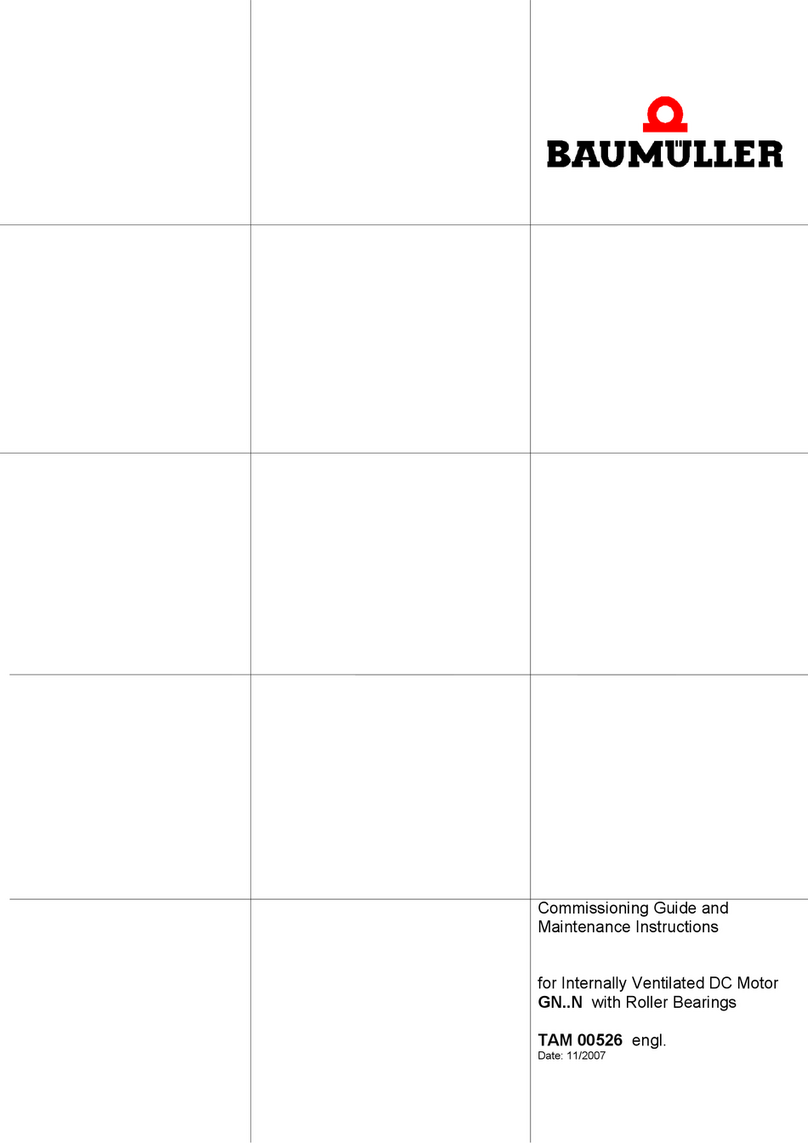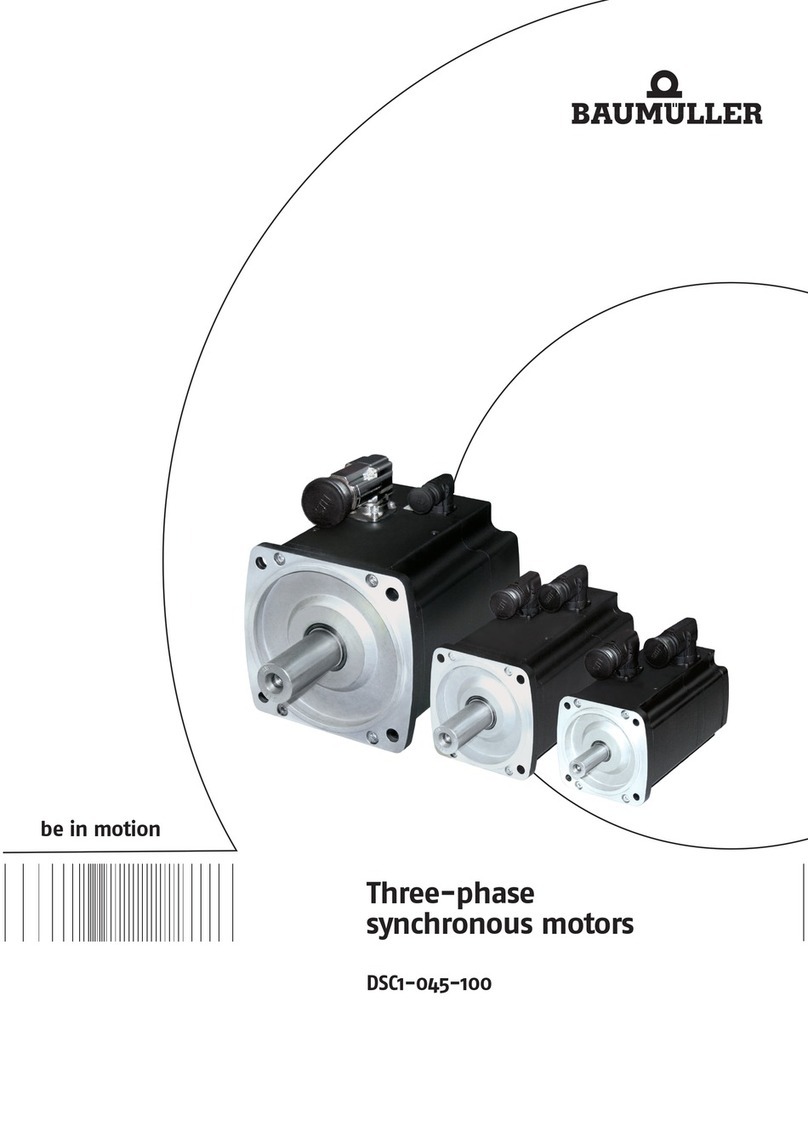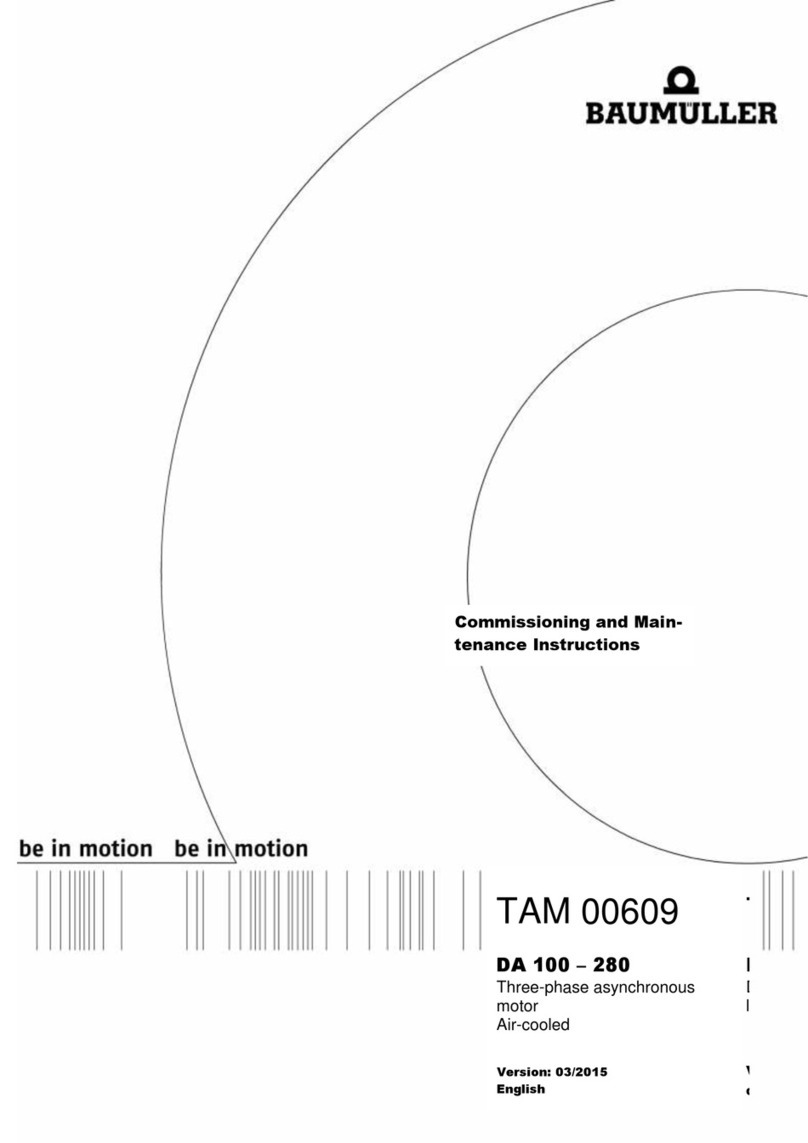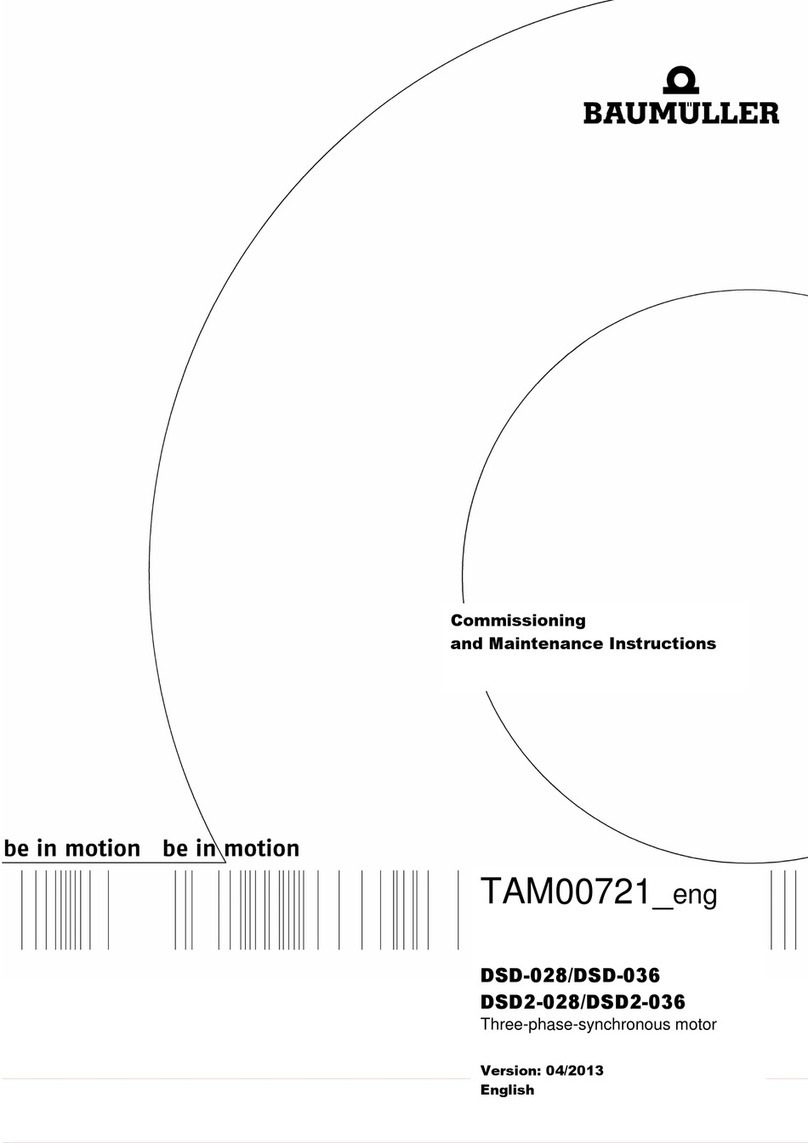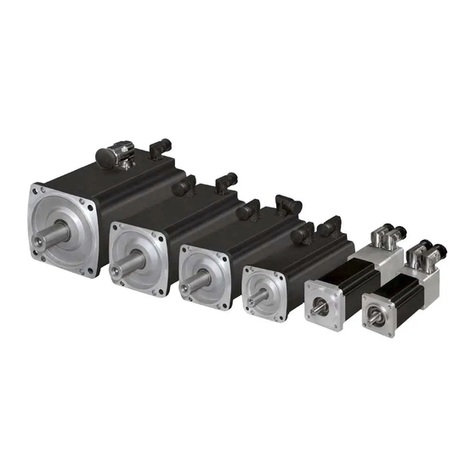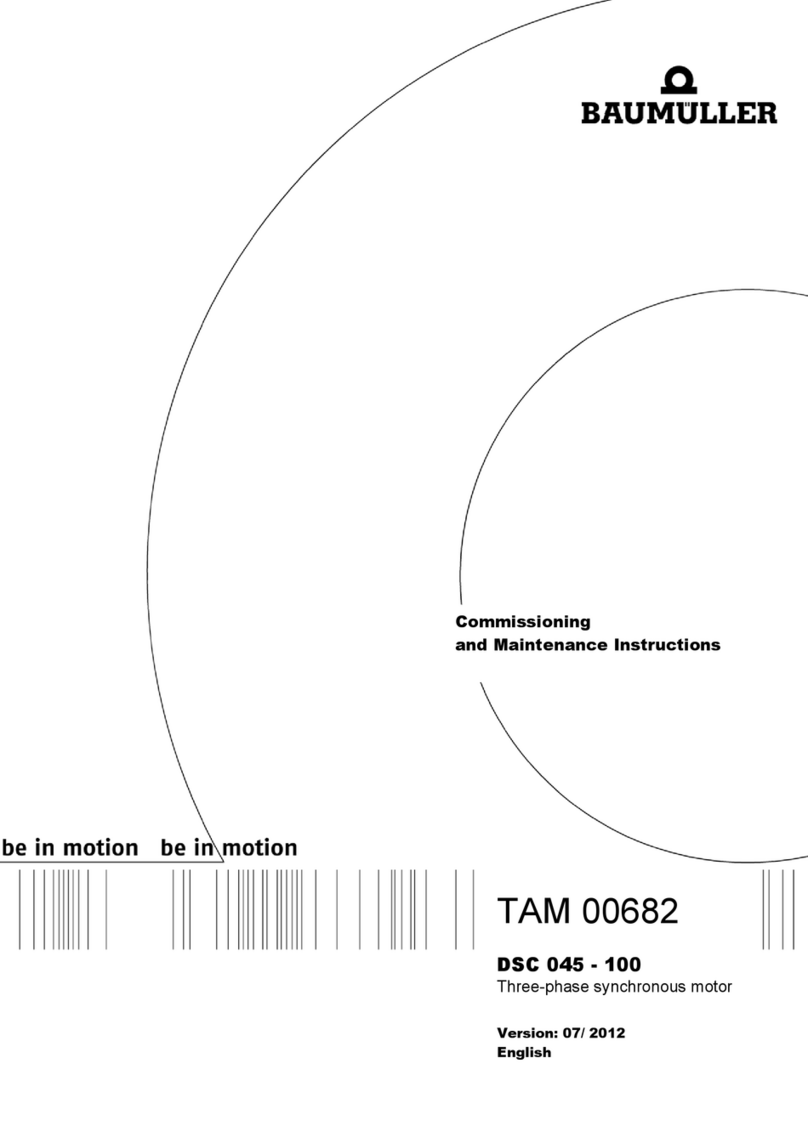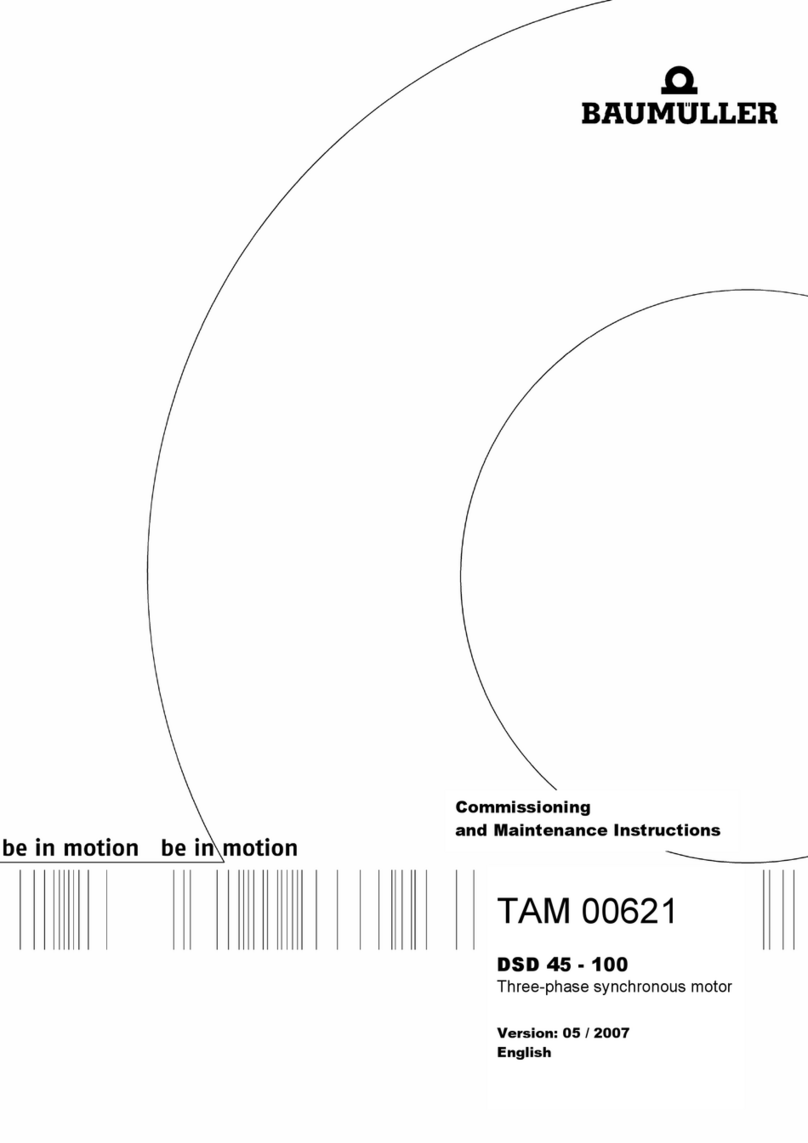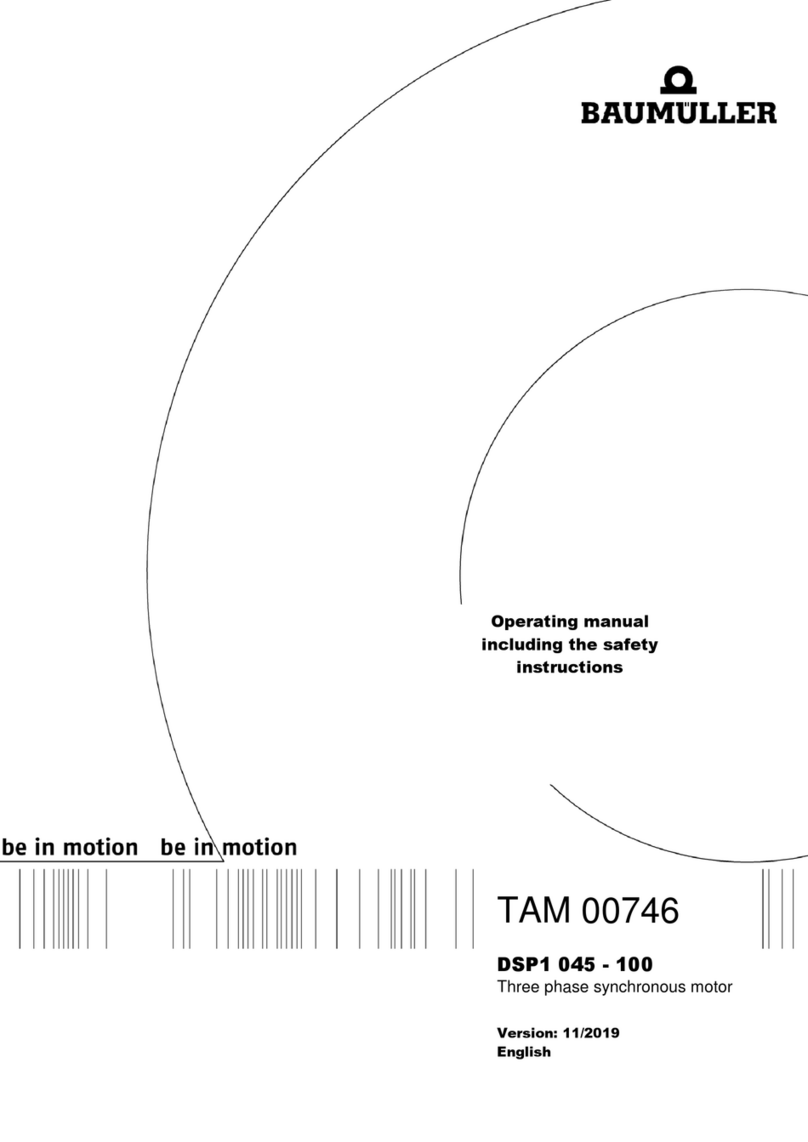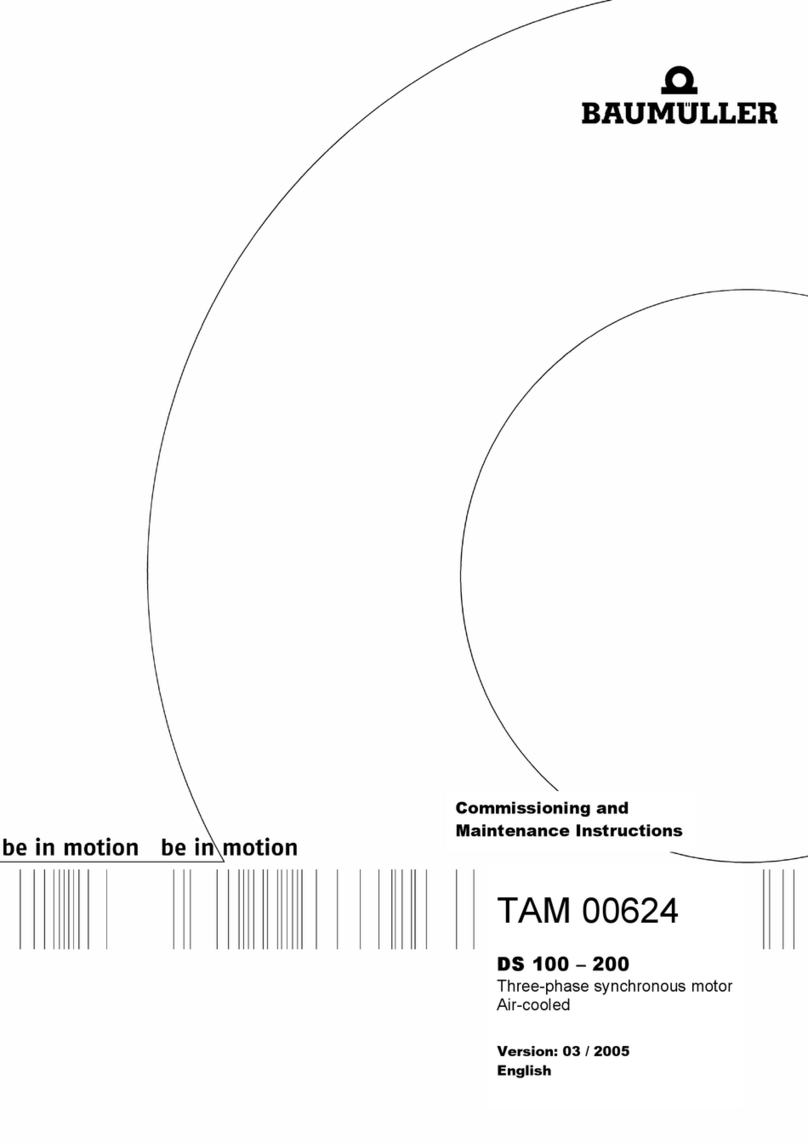
TAM 00695 3
DST2-135 –400 W 10 / 2019
Three-phase synchronous motor, water-cooled English
Table of contents
1General Safety Instructions..........................................................................................4
1.1 Safety........................................................................................................................................ 4
1.2 Designated use ......................................................................................................................... 5
1.3 Prohibition of unauthorised modifications and changes ........................................................... 6
2Operating conditions ....................................................................................................6
2.1 Product description ................................................................................................................... 6
2.2 Items supplied........................................................................................................................... 7
2.3 Nameplate................................................................................................................................. 7
2.4 Technical Data .......................................................................................................................... 8
2.5 Transport, intermediate storage................................................................................................ 8
2.6 Installation conditions, cooling details....................................................................................... 9
2.7 Balancing, drive elements and vibration................................................................................. 10
3Mounting......................................................................................................................11
3.1 Safety instructions................................................................................................................... 11
3.2 Installation, fixing..................................................................................................................... 11
3.3 Vibrations and resistance to vibrations................................................................................... 12
3.4 Electrical connections ............................................................................................................. 14
4Commissioning, operation .........................................................................................15
4.1 Safety instructions................................................................................................................... 15
4.2 Checks prior to commissioning............................................................................................... 16
4.3 Commissioning, operation....................................................................................................... 16
4.4 Malfunctions............................................................................................................................ 17
5Inspection and maintenance ......................................................................................18
5.1 Inspection................................................................................................................................ 18
5.2 Maintenance............................................................................................................................ 19
5.3 Re-lubrication (optional).......................................................................................................... 20
6Disposal.......................................................................................................................20
7Appendix 1: pole assignment (main connection and control port) .........................21
7.1 n connection with terminal box................................................................................................ 21
7.2 Control port : Resolver:........................................................................................................... 23
7.3 Control port : SRS / SRM 50................................................................................................... 23
7.4 Control port: ECN 1313 / EQN 1325....................................................................................... 24
8Appendix 2: water-cooled machines..........................................................................25
8.1 Definitions of power ratings for water-cooled machines......................................................... 25
8.2 Motorcooling............................................................................................................................ 25
8.3 Instructions for installation....................................................................................................... 25
8.4 Electrical connections ............................................................................................................. 26
8.5 Specifications for required coolant volume flows.................................................................... 26
8.6 Coolant consistency................................................................................................................ 26
8.7 Min. coolant temperature against ambient temperature and humidity.................................... 27
8.8 Inspection................................................................................................................................ 28
9Appendix 3: information concerning thrust-bearing motors and oil-features........29
9.1 Information on permissible axial forces on thrust-bearing motors.......................................... 29
9.2 Specifications for oil quantities................................................................................................ 29
9.3 Specifications for oil service life.............................................................................................. 29
